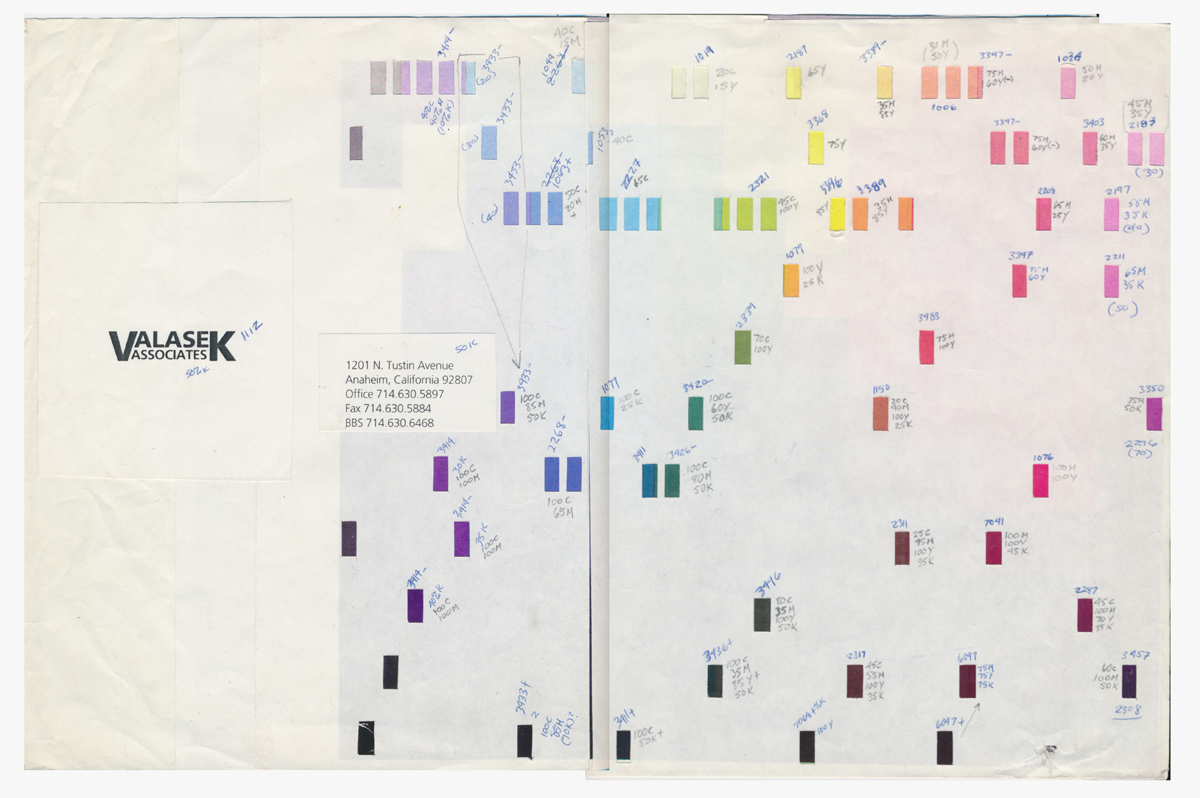
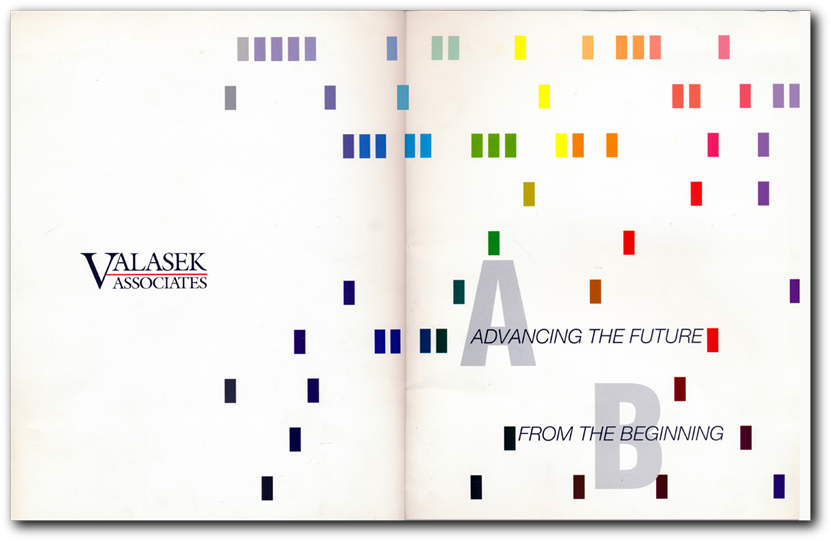
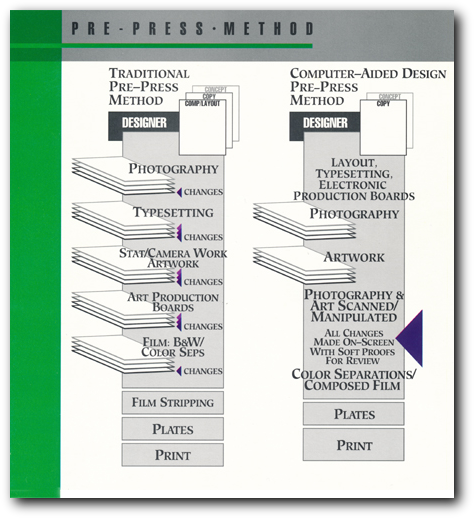
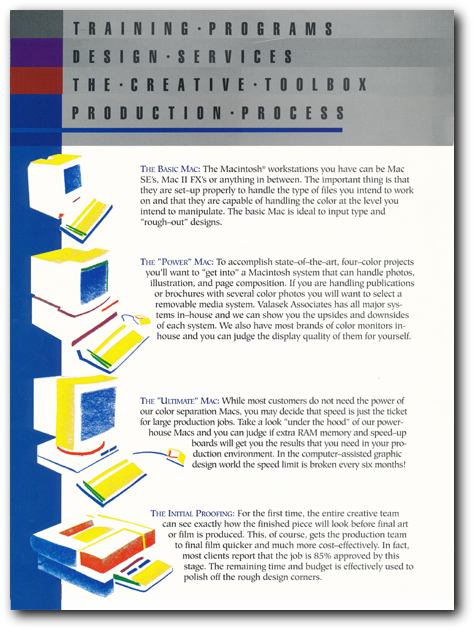
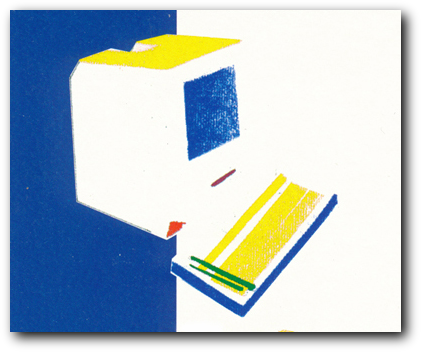
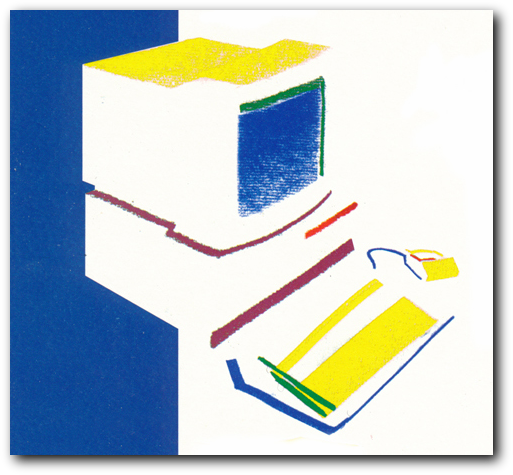
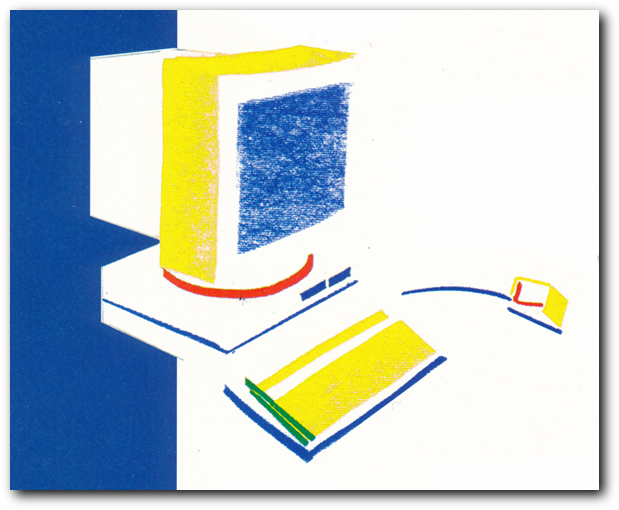
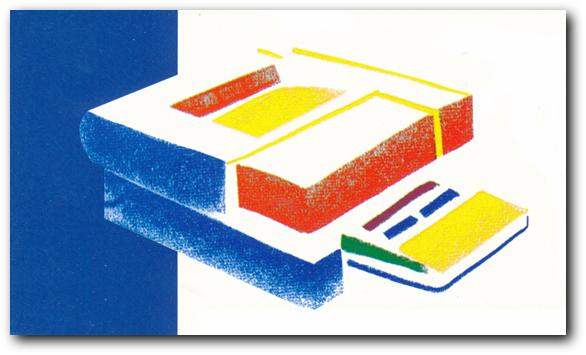

We were brought in on this to do a full cross-comparison analysis of traditional graphic design art production versus the newly forming digital process.
The media materials produced here were for presentation to ad agencies around Southern California in 1990.
The graphic design strategy here is made clear by the comp. What we have here is a traditional punch card, right from MaBell, through which we see the colors of an altered composition of Johannes Itten’s Bauhaus scholastic color chart. The agency, like so many of the early service bureaus, was looking to establish standards of digital production in this wild west setting. One, which can be seen in the color codes, was the use of the then new Focoltone color system.
For the discussion of equipment in this new process, I chose to disarmingly illustrate the computers in primary color, simple stroke chalk illustrations.
Having been one who worked through the production art departments of the very early Seventies, with production boards, hand cut rubyliths and typesetting, I could wax poetic about the standards of quality lost during this transition. The computer guys didn’t know diddley about graphic design. Computer geniuses all, but no design experience. I knew it would take at least five years to seven years for the first design school graduates trained in digital process before this art production process would evolve. The one thing I will say is, I still miss the old guard master typesetters. If you were a young designer getting started these guys could make you look like a champ. If you were an Art Director that had been around for a while, you could always depend on them for unquestionable quality.
The summation of my internal analysis was this: This ability to change things at the last minute on screen was going to transform the client relationship. In the past they signed a comp, approved type and it went into production. Here they could screw with the layouts and the production process right to the last minute. Quality, respect for process and budget would be forever altered.















